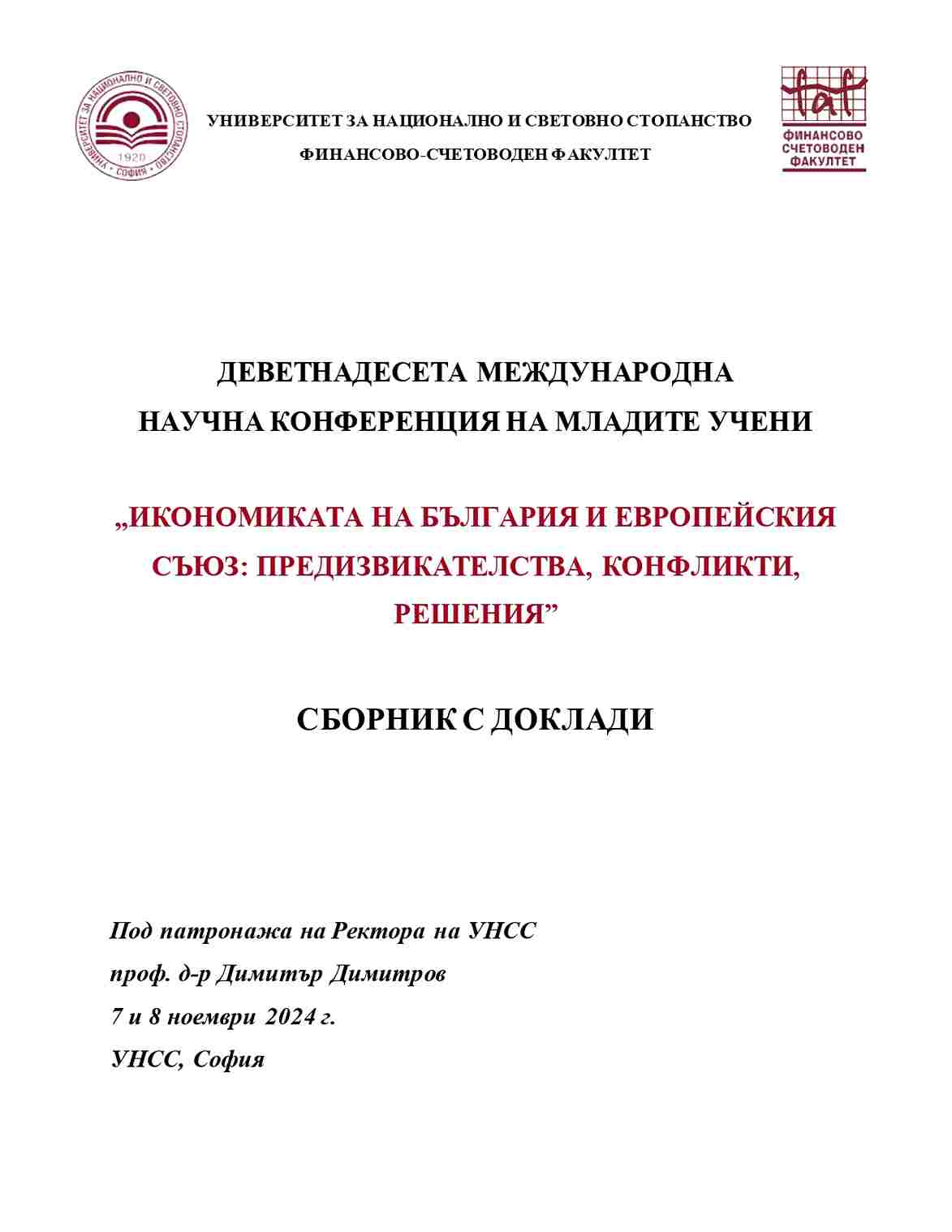The Role of Unemployment in Reduction GDP Forecasts Errors: Mixed Frequency Bayesian Vector Autoregression (MF-BVAR) Models for the Euro Zone from 1999Q1 to 2014Q2
The Role of Unemployment in Reduction GDP Forecasts Errors: Mixed Frequency Bayesian Vector Autoregression (MF-BVAR) Models for the Euro Zone from 1999Q1 to 2014Q2
Author(s): Sarah Goldman, Maya Jandah
Subject(s): Politics / Political Sciences, Politics, Social Sciences, Economy, National Economy, Business Economy / Management, Sociology, Methodology and research technology, Policy, planning, forecast and speculation, EU-Approach / EU-Accession / EU-Development, Human Resources in Economy, Socio-Economic Research
Published by: Университет за национално и световно стопанство (УНСС)
Keywords: time-series models; forecasting and prediction methods; forecasting and simulation; central banks and their policies
Summary/Abstract: This paper has two objectives. First, a brief introduction to the MF-VAR methodology that accounts for mixed frequencies is the goal. The second aim is to forecast GDP growth employing this method. Two specifications have been proposed by us. Model 1 outlines a number of monthly variables that are considered to have an impact on GDP growth. The strict monetary aggregate (M1), inflation rate, and short interest rate are the model's monthly variables. Since the correlations between these factors have been thoroughly investigated in the theoretical literature, it is common sense to use them to estimate GDP growth forecasts. Actually, those variables are frequently included in the overall framework of monetary policy and significantly contribute to our comprehension of how monetary instruments shape economic growth. As model 2 adds the unemployment rate, it is an enhanced version of model 1. The presence of the unemployment variable in the specification matters since the Federal Reserve Banks have a dual objective involving employment and price stability, whereas the European Central Bank (ECB) prioritizes price stability (primary mandate). We rely on a variety of metrics, such as Root Mean Square Error (RMSE), Mean Absolute Error (MAE), Mean Absolute Percentage Error (MAPE), and Theil inequality coefficient, that gauge forecast error, to assess the performance of the forecasts. In regards to error predictions, Model 2 performed better than Model 1 according to the majority of the criteria. The ECB could be encouraged by this outcome to move forward with a dual mandate encompassing unemployment.
- Page Range: 46-54
- Page Count: 9
- Publication Year: 2025
- Language: English
- Content File-PDF

